 |
| image courtesy of wikimedia commons |
Our friend Milli (Master Gardener of the Milagro Allegro community garden) stopped by today to pick up some sourdough starter. On seeing our back yard swamped abundant with borage (Borago officinalis), she mentioned that she’s been really digging borage tacos lately. This was very exciting news to us, because we’d never eaten our borage leaves–only the flowers.
So tonight I went out and cut a whole mess of stiff, prickly borage leaves. The prickles vanish on cooking. Some sources say only to use small leaves for cooking but I say fie to that. I used leaves of all sizes and after cooking there was no difference between them. Borage is actually rather delicate under all its spikes and cooks down considerably in to a very tender, spinach-like consistency.
Instead of making little tacos with it, we folded it into tortillas with a bit of goat’s milk gouda to make yummy green quesadillas–a quick, light and satisfying meal at the end of a busy day.
How did we cook it? –>
We cooked the borage as we cook all of our greens, no matter what kind. It seems we can’t be bothered to develop any variations on this theme. First we saute chopped garlic in lots of olive oil along with chile pepper flakes, then add piles of chopped wet greens–any greens– to the pan. These get tossed until they wilt to the point where we want them, which varies. If any green seems particularly tough, we put a lid over the skillet for a moment to steam them. Salt and pepper and maybe a squeeze of lemon finishes them off.
I used this technique on the borage and it came out very nice. Tender, as I said, with pleasing bit of cucumber flavor. There is also the faintest hint of a mucilaginous texture, but nothing off-putting. Borage is a cooling herb, like mallow (Malva sylvestris)–which we like to eat as a green as well. Because of this cooling quality, both are refreshing to eat, especially on a hot day. I’m writing this a few minutes after dinner and this coolness lingers in my throat. It’s also supposed to be a soothing, grounding herb and now I’m wondering if I don’t feel a bit more grounded, too, post-quesadilla.
Borage is also a medicinal plant–as a compress, tea, tincture or oil extract it has different uses and effects, which will have to be covered in another post.
More people are familiar with borage’s star-like edible flowers, which can be preserved in sugar for cakes, or tossed into salads. I’ve heard of freezing them in ice cubes for fancy drinks, which is a lovely idea.
Obligatory health warning: I’m going to quote this directly from the very useful Plants for a Future database, from their entry on borage:
The plant, but not the oil obtained from the seeds, contains small amounts of pyrrolizidine alkaloids that can cause liver damage and liver cancer[238]. These alkaloids are present in too small a quantity to be harmful unless you make borage a major part of your diet, though people with liver problems would be wise to avoid using the leaves or flowers of this plant.
Also, I’ve seen warnings regarding pregnant and nursing women eating borage here and there, too, although I don’t know the exact reasons for the warning. As per usual, check with your doctor if you have concerns.
We figure as long as we’re only eating borage a few times a week, and only for a limited period–“borage season,” as it were–these pyrrolizidine alkaloids are not going to get us down.
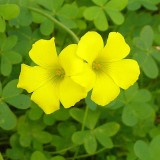
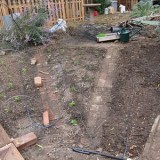
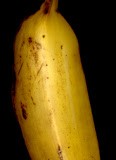
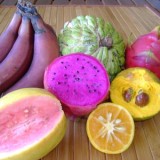
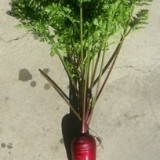
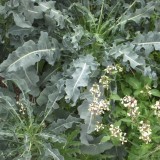
Terrific! I guess I’ll have to eat a few Borage flowers first to get up enough bravery to eat those prickly leaves.
I love borage! My bees love borage! And now I know I can eat the leaves…not just the flowers, I love borage even more!
Borage is super bee forage, which is why I bought seeds this year, but it’s also a major constituent of a German sauce called Grune Sosse (green sauce) which goes with a tafelspitz, which is also why I’m planting it. But it’s mostly for my bees, which should be here in a couple of weeks.
That is the only way I cook greens, too. I haven’t found any better way and it’s so tasty and easy.
I am growing borage and recently tried the flowers for their ‘cucumber flavour, with aftertaste of oyster’ but found there was way more ‘oyster’ than I could handle! Maybe I need to eat the leaves, we have alot of them at the moment!!
@dixiebelle
Aftertaste of oyster? That’s interesting. I’ve only tasted cucumber. It must be some variable–soil, weather, variety–at play.
Well, borage season is a long time, at least here – over in the southern hemisphere my borage is still going strong at the end of summer, and lots of little borage plants are now popping up with the beginning of the autumn rains. Thanks for the info, yet another possible green leafy veg to mix things up!
I’m a new reader to your blog and just wanted to say how much I am enjoying it… the information, the photos, your voice/style…
But mostly because you cook greens the one and only best way! 🙂
Thanks!!
I have tons of borage, I grow it for the bees and ladybugs. So last night we tried it as a wilted green stir-fry, in olive oil and lots of garlic. I also added some more water to help steam cook it. My batch did not quite lose the prickle y borage left aspect. It was not unpleasant, but I’d want to try it again and maybe cook it longer or something. I used both young and old leaves.
@Christine: Yes, I don’t think wilting or light cooking does the deal. It has to be very cooked. Don’t be afraid to cook that stuff down! Put a lid on it for a couple of minutes to speed it along.
Borage is unequaled I planted it in my garden in the middle of my tomato patch no bugs or hornworm what so ever very stocky and prolific fruit by large quantity,very cold hardy right thru the fall,in 2011 when other had problems with fruit set and plants in connecticut I had none at all and im 56 years old and have never seen such healthy stocky plants in my entire life with 100’s of pounds of fantastic problem free tomatoes
Borage is unequaled I planted it in my garden in the middle of my tomato patch no bugs or hornworm what so ever very stocky and prolific fruit by large quantity,very cold hardy right thru the fall,in 2011 when other had problems with fruit set and plants in connecticut I had none at all and im 56 years old and have never seen such healthy stocky plants in my entire life with 100’s of pounds of fantastic problem free tomatoes please take note I also put torn comphrey leaves in the hole at transplant time and periodically watered them with fish&kelp solution,& 9 to 1 ratio of powdered milk,and also fermented lots of comprey in water and little molasses and powdered milk and one pureed bannana peel and its rine let it set for 30 days and stirred occationally leaving it exposed to air then used it as a emultion fertilizer mixing it as a 15 or 20 to 1 ratio with water and periodically watered the plants with this it has such deep tap roots it has one of the highest concentration of the essential trace elements that your plants need as well as being loaded with pottasiun and phosphorous if you have any question you can email me at [email protected]
Great to see it flowering from April here on the Lincolnshire Wolds.Wasn`t in my old cottage garden when I moved here 15 years ago…soon corrected that.
Had some flowers and very small leaves in my sarnies this lunchtime:)
Growing under the ancient Bramley tree are Garlic Chives and I`ve added Ransoms too.
know anywhere in new york city i might purchase borage leaves?
Sorry, but since we’re in LA, we don’t know. It’s a wild plant, so not sold fresh in markets. Dry leaves could be found at herb shops, perhaps. Your best bet would be to find a forager to show you what the plant looks like, or grow your own from seeds.
thanks, that’s what i figured!
You’re welcome. I should clarify that borage is not exactly a wild plant — I misspoke. It’s certainly not a native plant. It naturalizes easily and grows all over the place, but it is commonly sold on seed racks as a garden flower/herb.
It’s not sold in markets as a vegetable because its not generally considered palatable–with the exception of the flowers.
I think I misspoke because I can’t remember how or when I first planted borage in my yard. It just shows up every year–in force! It’s very much like a weed that way.
well, perhaps i’ll grow some in the very tiny piece of earth in the backyard or on my fire escape! does it need lots of light?
For the record, many botanists agree that 100 cups of borage tea is about as threatening as a bottle of beer. So 1/100th as dangerous as a can or bottle of beer, haha. Remember alcohol is plenty dangerous in #. A good reference point.
Don`t forget you need the depth of soil suitable for its longish taproot.
I`ve just dug some up from areas I don`t require it in,but there`s plenty elsewhere in the garden.I would be interested to know what the roots can be safely used for?
The smell of the leaves when crushed definitely has a seafood smell,not dissimilar to the Omega 3 EPA/DHA/D3 capsules I break open and smear on my arms if I end up catching a bit too much sun.Algae based I believe.
I’ve not heard of any use for the root– maybe someone else will know. And regarding soil, my borage self seeds randomly throughout the yard, regardless of soil depth or quality. In this climate, at least, it’s fairly unstoppable! Perhaps it’s more sensitive elsewhere?
Hello borage buddies,
I am in fairbanks Alaska and a few years back I added one or two borage starts from seed, now it pops up everywhere! It brings in the bees and I love the randomness as it reseeds it’s self. I am trying to pull plants now because it can take over. The roots have always made me wonder, the pull out so beautiful, any one eat them??? Or know more about them? Please let me know or if you know of a site or good read on the subject.
Thanks and love from the north Aprilmae
Pingback: Medicinal Herbs for the Northern Gardener |
Pingback: Chicken Mushroom Quesadilla with Corn-Avocado Salsa | Babaganosh
Where can I order whole borage leaves? My local stores only sell the supplements. Thanks.
Sorry, I don’t know where you can buy borage leaves. It is very easy to grow from seed, and grows wild.
For years borage has a favorite in my garden – it volunteers abundantly but is easy to remove, it’s beautiful, and the bees love it – even though I didn’t know how to eat it. Tried your method tonight and it was delicious. Thanks so much. Over the winter discovered several recipes (which I haven’t been able to try yet) for borage stems or stalks. Seems they are prized in Spain (borraja), Portugal (borragem) and Italy – even available canned. One very common recipe is borage (stalks) and potatoes – learned recently that this a favorite of an elderly Italian acquaintance who is an avid gardener and practitioner of folk cuisine.